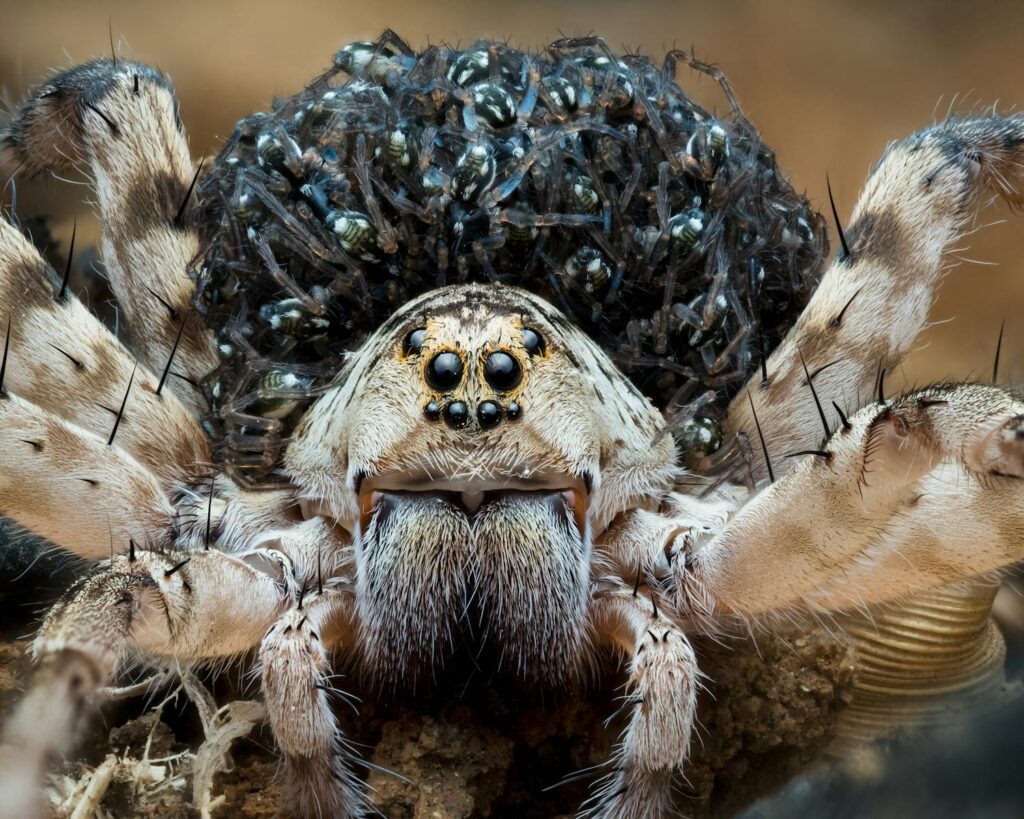When we think of parental care in the animal kingdom, insects rarely come to mind. Most people assume these small creatures simply lay their eggs and move on, leaving their offspring to fend for themselves. However, the reality is far more fascinating. Many insect species display remarkable parenting behaviors that rival those of birds and mammals. From constructing elaborate nests to providing food for their young and even defending them against predators, insect parenting strategies are diverse and often surprisingly sophisticated. This article explores some of the most remarkable examples of parental care in the insect world, challenging our preconceptions about these tiny but complex creatures.
The Evolutionary Puzzle of Insect Parental Care

Parental care among insects presents an evolutionary paradox that has intrigued scientists for decades. While most insects produce hundreds or even thousands of offspring, making a “quantity over quality” approach seem logical, some species buck this trend by investing heavily in fewer young. This evolutionary strategy typically emerges when the survival advantages for offspring outweigh the cost to parents of reduced reproductive output. In harsh or unpredictable environments, parental protection can dramatically increase offspring survival rates. Researchers believe that insect parental care has evolved independently multiple times across different insect orders, suggesting its significant adaptive value despite the biological costs involved.
Earwigs: Devoted Single Mothers

Female earwigs exemplify maternal dedication among insects, providing care that spans weeks of their relatively short lives. After carefully selecting a suitable underground nest, a mother earwig lays approximately 50-90 eggs which she protects vigilantly from predators and fungal infections. She regularly cleans each egg with her mouthparts to prevent harmful mold growth, a behavior crucial for embryonic development. Perhaps most remarkably, if her eggs are scattered, she diligently collects and returns them to the nest—demonstrating a recognition capability previously thought beyond insect cognition. After the nymphs hatch, the mother continues to protect them and even regurgitates food for them during their first days of life, making earwigs one of the clearest examples of dedicated insect parenting.
Burying Beetles: Cooperative Undertakers

Burying beetles showcase one of the most elaborate parenting systems in the insect world, with both parents typically involved in care—a rarity among insects. These remarkable creatures locate small dead vertebrates like mice or birds, then work together to bury the carcass by excavating soil beneath it. Once underground, they strip the corpse of fur or feathers, shape it into a compact ball, and treat it with antimicrobial secretions to preserve it as a food source for their offspring. The female lays eggs nearby, and when the larvae hatch, both parents feed them regurgitated carrion upon request—responding to specific begging behaviors from their young. This biparental care continues until the larvae are ready to pupate, with parents actively defending their brood against competitors and predators throughout development.
Dung Beetles: Providing a Complete Starter Home
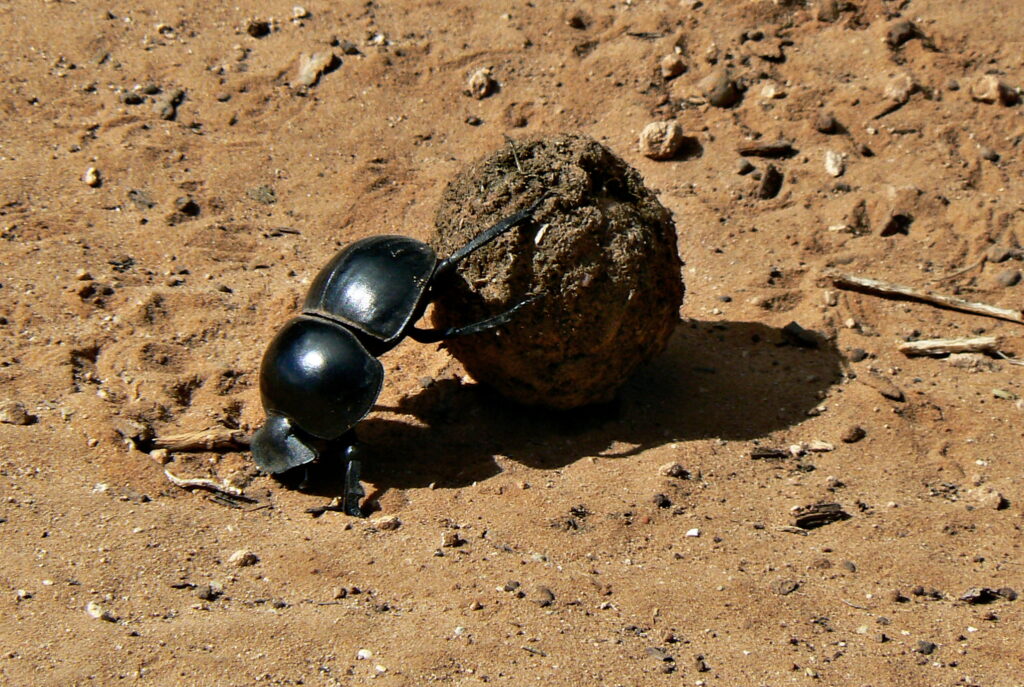
Dung beetles display remarkable parental investment by creating elaborate brood balls that serve as both shelter and sustenance for their developing young. Parents collect fresh animal dung, shape it into spherical structures, and embed a single egg within each ball, effectively creating a self-contained development chamber. Some species, particularly tunnelers, construct underground nests with multiple brood balls, each provisioned with sufficient nutrients to sustain a larva through its entire development. In certain dung beetle species, females remain with their offspring, performing maintenance on the brood balls by repairing cracks and preventing fungal infections. This intensive preparation ensures their larvae have everything needed from birth to adulthood—a complete package of food, shelter, and protection—showcasing a sophisticated form of resource provisioning that maximizes offspring success.
Giant Water Bugs: Fathers Who Bear the Burden

Male giant water bugs (Belostomatidae) demonstrate one of the most striking examples of paternal care in the insect world through their unique back-brooding behavior. After mating, the female literally glues her eggs onto the male’s back, where he will carry them for the next two to three weeks. During this period, the father assumes complete responsibility for the eggs’ welfare, regularly breaking the water’s surface to expose the eggs to air and preventing them from being smothered by algae or bacteria. He actively maintains the eggs by rubbing his legs over them and adjusting his swimming behavior to optimize their oxygen exposure. This paternal commitment continues until the eggs hatch, with the father unable to molt or effectively escape predators while carrying his precious cargo—a remarkable sacrifice that significantly increases offspring survival rates.
Eusocial Insects: The Ultimate Collective Parenting
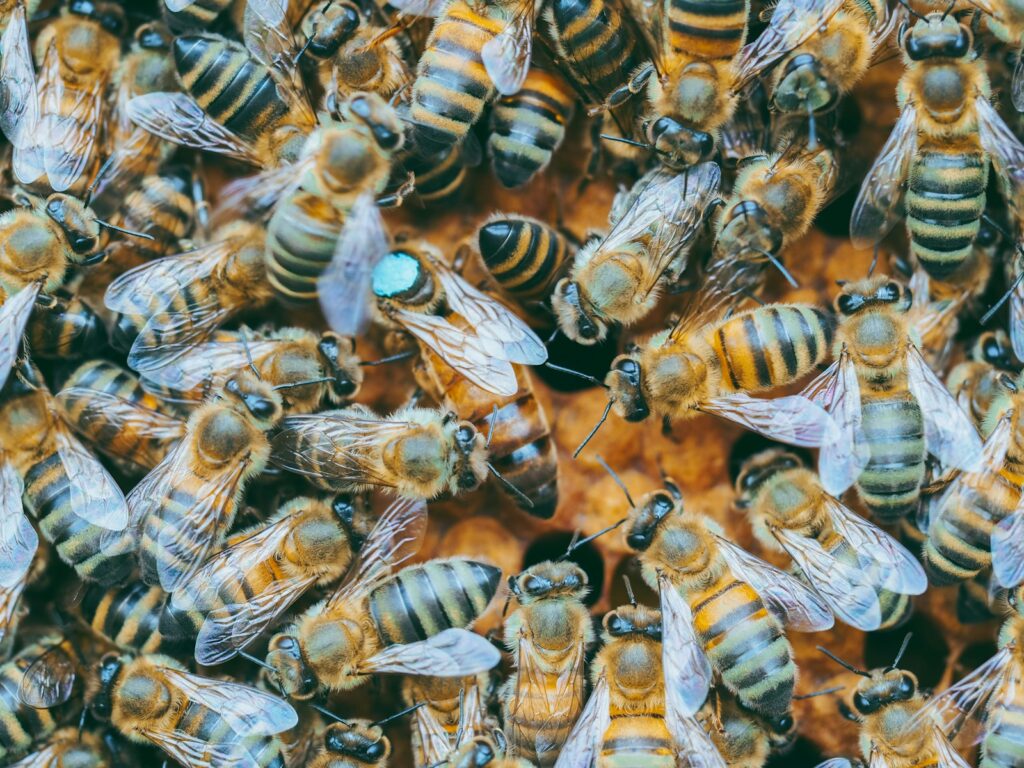
Eusocial insects like ants, bees, and termites represent the pinnacle of collective parenting, having evolved complex societies where brood care is distributed among specialized workers. In these sophisticated systems, the queen focuses exclusively on egg production while sterile female workers dedicate their lives to sibling care rather than having offspring of their own. Worker ants, for example, meticulously tend to eggs, larvae, and pupae—feeding them, cleaning them, and moving them to optimal temperatures and humidity levels within the nest. Honey bee nurse workers produce nutritious royal jelly and worker jelly from special glands to feed developing larvae, adjusting the diet to determine whether a female develops into a worker or queen. This extreme division of labor creates a super-efficient parenting system where hundreds or thousands of siblings collectively raise the colony’s young, demonstrating how evolution can produce alternative models of successful parenting.
Assassin Bugs: Bodyguards with Toxic Weapons

Certain species of assassin bugs display remarkable maternal protection, with females standing guard over egg clusters and newly hatched nymphs. These protective mothers position themselves strategically near their offspring, ready to deploy chemical defenses against approaching threats. Using their specialized rostrum—normally used for injecting prey with paralyzing venom—mother assassin bugs can quickly respond to potential predators like ants by stabbing them with painful, sometimes lethal injections. Some species, including the wheel bug (Arilus cristatus), maintain this protective stance for up to two weeks after eggs hatch, a critical period when the soft-bodied nymphs are most vulnerable. Researchers have observed that broods protected by maternal guards have significantly higher survival rates than unprotected groups, demonstrating the clear evolutionary advantage of this defensive parenting strategy.
Ambrosia Beetles: Fungal Farmers and Protective Mothers
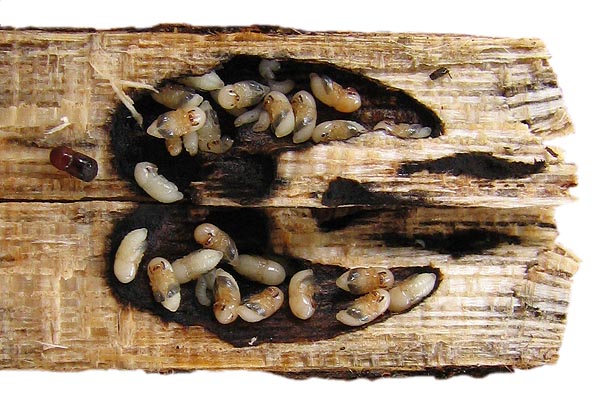
Ambrosia beetles demonstrate sophisticated parental care through their remarkable fungal farming practices that create sustainable food sources for their offspring. Female beetles bore into tree tissues, creating extensive tunnel systems while carrying specific fungal spores in specialized body pockets called mycangia. Once inside, they inoculate the tunnel walls with these fungi, cultivating gardens that will nourish their developing young. The mother beetle remains in the gallery system, protecting her offspring from predators and competing fungi while maintaining ideal moisture conditions for fungal growth. Some species even remove larvae waste and dead individuals to prevent contamination of their carefully maintained fungal gardens. This combination of resource provisioning and active protection creates an optimal environment for larval development, showcasing the beetles’ impressive adaptation to ensure offspring survival.
Treehopper Mothers: Vibration-Based Defense Systems
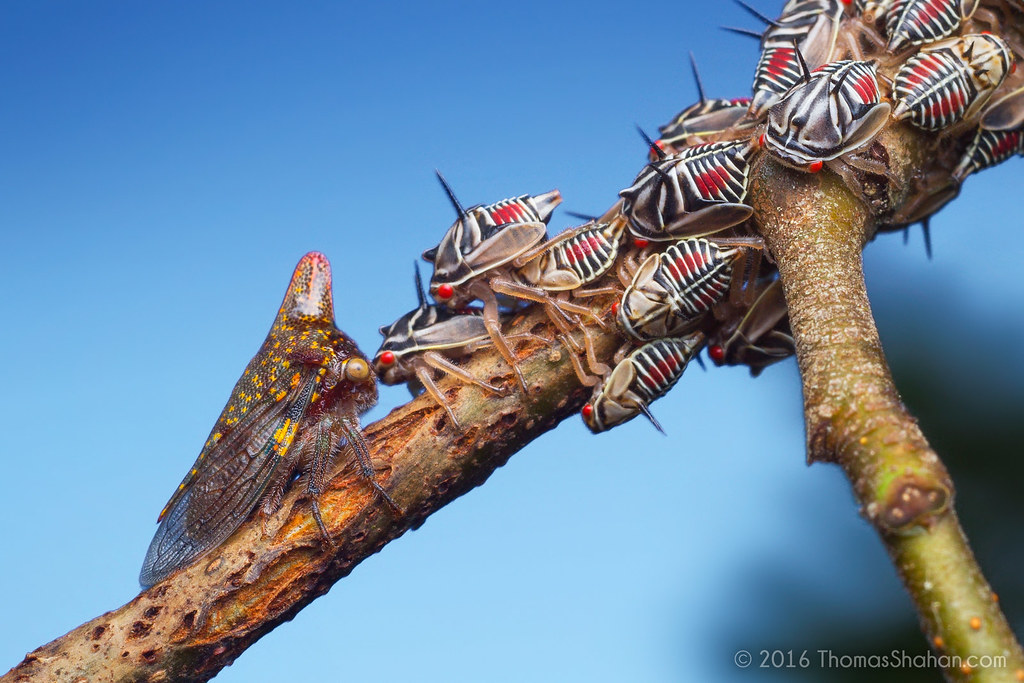
Treehopper mothers employ a fascinating sound-based defense system to protect their clustered eggs and nymphs from predators. These insects create specialized vibrations that travel through plant stems as warning signals when threats approach their brood. Upon detecting danger, a mother treehopper produces distinct vibrational patterns that alert her offspring to danger, often causing them to scatter or freeze depending on the specific threat. Remarkably, scientists have documented that different treehopper species have unique “alarm calls” that their specific nymphs recognize and respond to appropriately. Some species even coordinate defensive responses among multiple females guarding broods on the same plant, creating a communication network that significantly enhances offspring protection. This sophisticated vibrational communication system showcases how even small insects can evolve complex mechanisms for effective parental protection.
Bess Beetles: The Nuclear Family of the Insect World
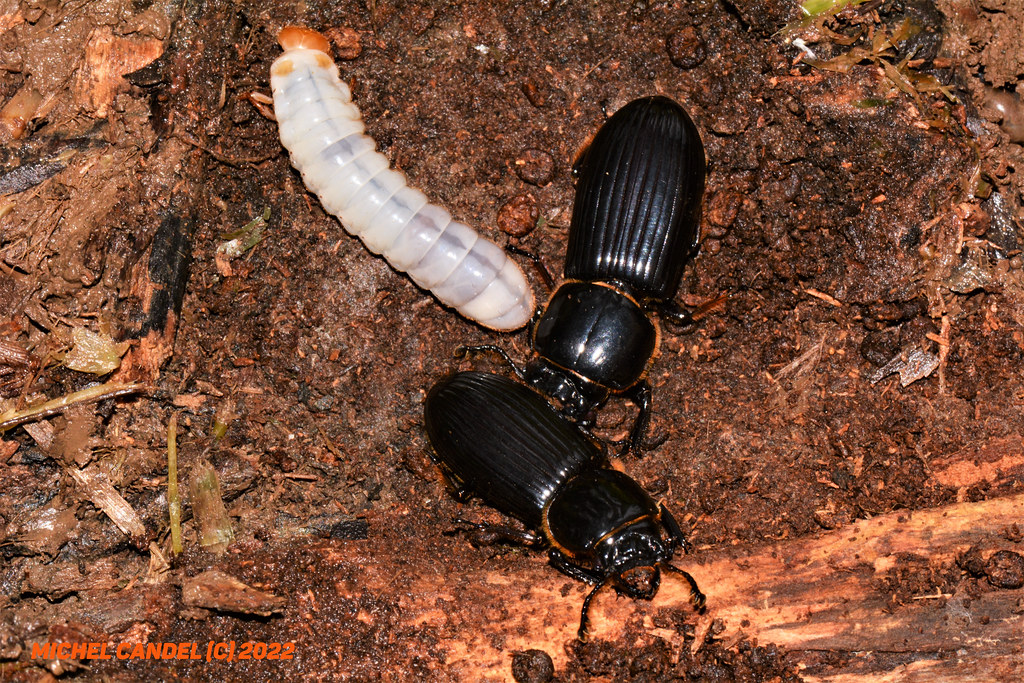
Bess beetles (Passalidae) demonstrate remarkable family cohesion through their extended biparental care and sibling cooperation. These subsocial beetles create galleries in rotting logs where both parents remain with their offspring throughout development, processing wood into digestible forms for their larvae through repeated ingestion and bacterial enrichment. The adults continuously produce specialized fecal material called frass that contains essential microbes necessary for larvae to digest wood, a form of nutritional provisioning crucial for offspring development. Uniquely among beetles, bess beetles have evolved specialized sound production mechanisms used for family communication, with different acoustic signals for alarm, mating, and parent-offspring interactions. Perhaps most surprisingly, older juvenile beetles often remain in the family gallery to help care for their younger siblings before dispersing, creating a rare example of an insect nuclear family with multiple generations cooperating in brood care.
Lace Bugs: Mothers Who Create Defensive Architecture

Female lace bugs (Tingidae) demonstrate dedicated maternal care through their creation of elaborate architectural structures that protect their developing eggs. Using specialized secretions, mother lace bugs construct intricate protective coverings over their egg clusters, often incorporating their own fecal matter which hardens into durable shields. These defensive structures not only protect eggs from predators and parasitoids but also help maintain optimal humidity levels for embryonic development. In many species, the mother remains stationed near her eggs, actively defending them against threats by engaging in direct confrontation with potential predators despite her small size. Some lace bug species take this protection further by creating barriers of sticky secretions around their egg clusters that entrap small predators like ants. These sophisticated protective strategies represent significant maternal investment, highlighting evolution’s ingenious solutions for offspring protection in vulnerable developmental stages.
Shield Bugs: Maternal Umbrella Protection

Several species of shield bugs (Pentatomidae) and related families display remarkable maternal care by physically sheltering their eggs and newly hatched nymphs beneath their bodies. These dedicated mothers position themselves directly over their egg clusters, creating a protective shield against predators, parasites, and environmental threats. When disturbed, rather than fleeing to save themselves, mother shield bugs typically stand their ground or even press their bodies more firmly over their offspring. In some species, the maternal shield actively releases chemical deterrents from specialized glands when threatened, creating an additional defensive barrier. Researchers have documented that this physical protection significantly increases offspring survival rates, particularly against egg parasitoids that would otherwise decimate unprotected clutches. The mother typically remains with her nymphs through their first instar (developmental stage), only departing when the young have developed sufficient mobility and chemical defenses of their own.
The Future of Insect Parenting Research
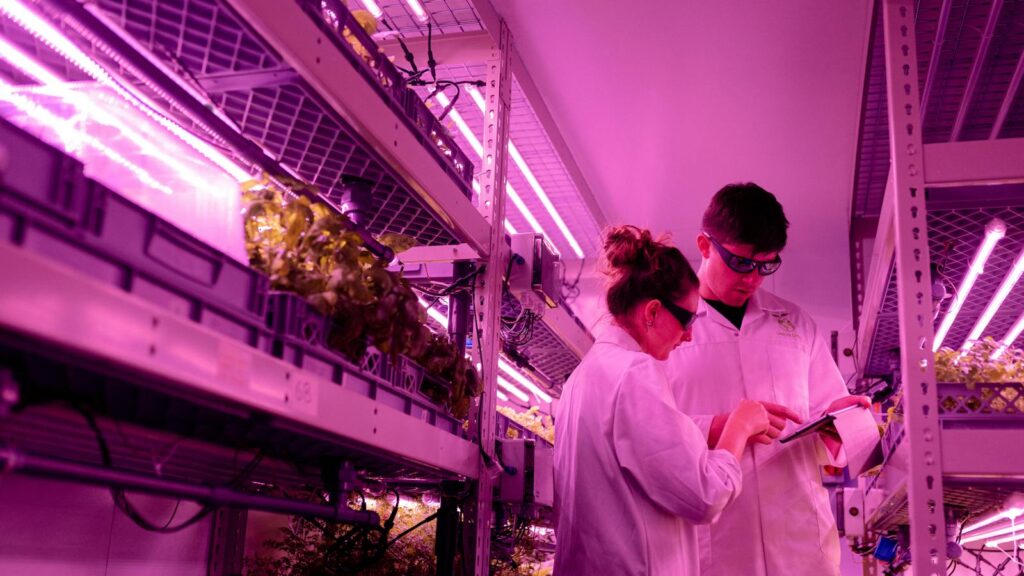
Research into insect parental care represents a rapidly expanding frontier in entomology with significant implications for evolutionary biology. Modern genetic tools now allow scientists to explore the molecular underpinnings of parenting behaviors, potentially revealing how genes influence complex social traits across different species. Climate change poses particular challenges for insects with temperature-dependent parental behaviors, with some studies already documenting altered timing in egg-tending activities that may affect offspring survival. Comparative studies examining parental care across related species continue to provide insights into how these behaviors evolved and which environmental factors drive their development. As our understanding deepens, insect parenting research may even offer unexpected applications in pest management by identifying critical periods when species are most vulnerable due to concentrated parental investment.
Conclusion

The diverse and sophisticated parenting strategies employed by insects challenge our understanding of these seemingly simple creatures. From earwigs that tenderly clean their eggs to burying beetles that prepare elaborate nurseries, from giant water bug fathers carrying eggs on their backs to the collective child-rearing of eusocial colonies, insect parenting represents a remarkable evolutionary adaptation. These behaviors remind us that the drive to ensure offspring survival transcends size and complexity, appearing across the animal kingdom in surprisingly similar ways. As we continue to study these fascinating parenting systems, we not only gain insight into insect biology but also develop a deeper appreciation for the complex behaviors that exist in creatures we often overlook. The next time you encounter a seemingly ordinary insect, remember that it might be engaged in extraordinary acts of parental care, contributing to one of nature’s most fundamental processes.

